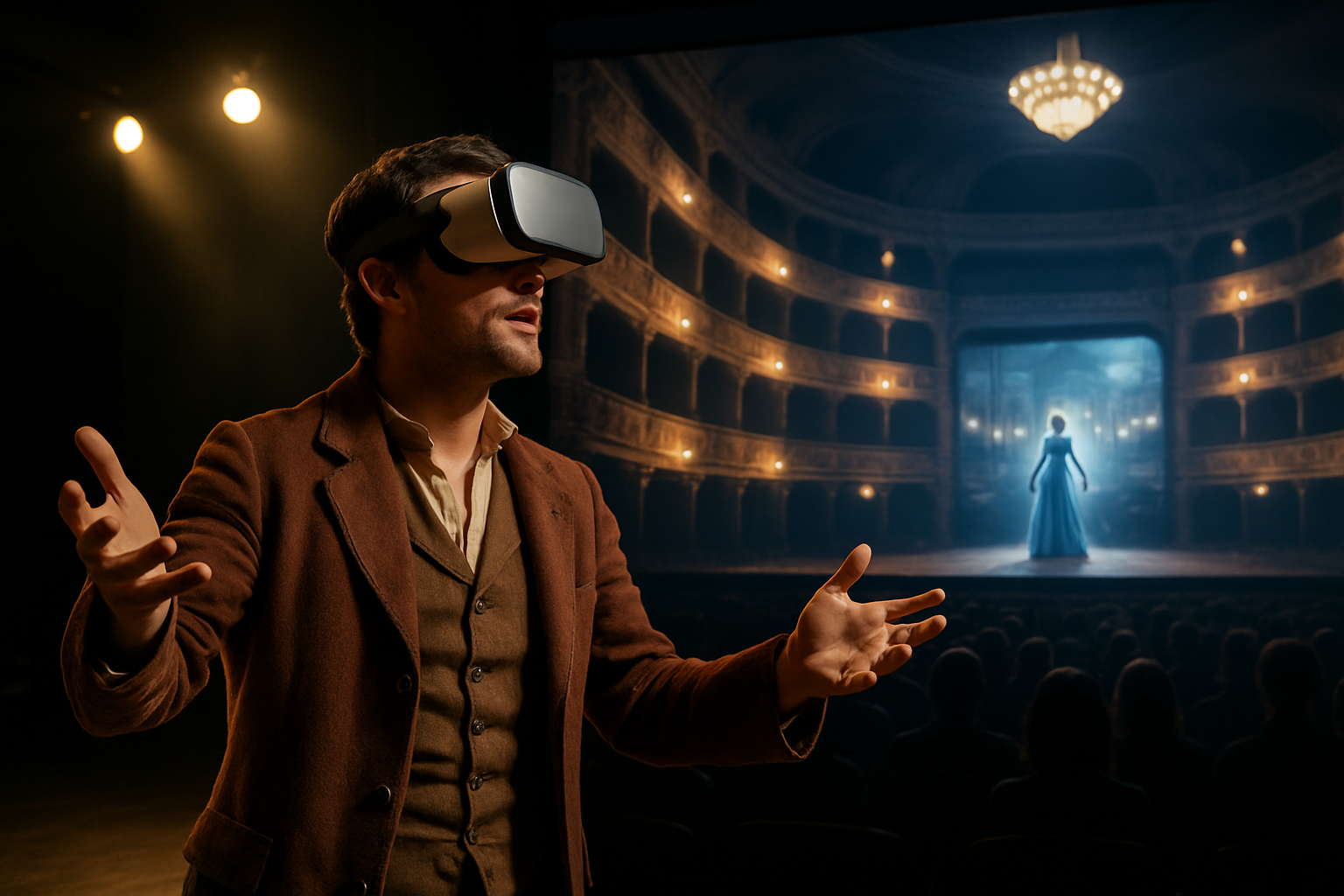Virtual Reality Operas: A New Frontier in Musical Theater
The fusion of cutting-edge technology and classical art forms is reshaping the landscape of musical theater. Virtual Reality operas are emerging as a groundbreaking medium, offering audiences immersive experiences that blur the lines between reality and imagination. This innovative approach to operatic performance is captivating both traditionalists and tech enthusiasts, promising to revitalize the genre for a new generation of music lovers.

Reimagining the Operatic Experience
In traditional opera houses, audiences are confined to their seats, viewing the performance from a fixed perspective. VR opera shatters these limitations, allowing spectators to step into the heart of the production. Users don VR headsets to find themselves transported to fantastical realms, standing alongside performers or even inhabiting the roles of characters. This level of immersion creates a deeply personal and emotionally resonant experience, forging a unique connection between the audience and the art.
Technical Challenges and Innovations
Creating a VR opera is no small feat, requiring a delicate balance of musical expertise and technological prowess. Audio engineers work tirelessly to recreate the nuanced acoustics of concert halls within virtual environments, ensuring that the power and subtlety of operatic voices are faithfully reproduced. Visual artists and programmers collaborate to craft intricate, responsive worlds that react to the music and the audience’s movements, creating a seamless blend of sight and sound.
Notable Productions and Their Impact
Several groundbreaking VR operas have already made waves in the arts community. The Santa Fe Opera’s VR adaptation of Rossini’s The Barber of Seville allowed viewers to experience the comic opera from multiple perspectives, including that of the characters themselves. Meanwhile, the Finnish National Opera’s production of Kaija Saariaho’s Only the Sound Remains transported audiences to a dreamlike forest, where they could interact with ethereal spirits and otherworldly beings.
The Future of VR Opera and its Cultural Significance
As technology continues to advance, the possibilities for VR opera seem limitless. Some envision fully interactive productions where audience members can influence the narrative, blurring the line between performer and spectator. Others see potential for global collaborations, with singers and musicians from around the world coming together in virtual spaces to create truly international productions.
Accessibility and Democratization of Opera
One of the most exciting aspects of VR opera is its potential to democratize access to this traditionally elite art form. By removing geographical and financial barriers, VR productions can reach audiences who might never have the opportunity to attend a live performance at a major opera house. This increased accessibility could play a crucial role in cultivating new generations of opera enthusiasts and ensuring the art form’s longevity.
Critical Reception and Artistic Debates
While many hail VR opera as a revolutionary step forward, some traditionalists express concerns about the medium’s impact on the purity of the art form. Critics argue that the technological elements may distract from the music itself, while proponents counter that VR enhances rather than detracts from the emotional core of opera. This ongoing debate reflects the tension between preservation and innovation that has long characterized the world of classical music.
Educational Applications of VR Opera
Beyond entertainment, VR opera is finding applications in music education. Conservatories and universities are beginning to incorporate VR technology into their curricula, allowing students to study historic performances, analyze vocal techniques from multiple angles, and even practice conducting virtual orchestras. This innovative approach to music education could revolutionize how future generations of musicians and opera lovers engage with the art form.
Conclusion: A New Chapter in Operatic History
Virtual Reality opera stands at the intersection of tradition and innovation, offering a glimpse into the future of musical theater. As technology continues to evolve and artists push the boundaries of creativity, VR opera has the potential to reinvigorate the genre, attracting new audiences while preserving the essence of this centuries-old art form. Whether viewed as a revolutionary step forward or a fascinating experiment, there’s no doubt that VR opera is writing a new chapter in the rich history of operatic performance.





